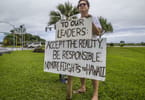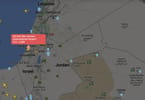For the fourth month in a row, international visitation to the Solomon Islands has shown double digit growth.
Figures released by the Solomon Islands National Statistics Office (SINSO) this week reveal international visitation increased for April 2018 increased 11.8 percent over the corresponding month in 2017.
The 2,250 total recorded showed an increase of 237 over the 2,013 achieved in April 2017.
With all major source markets showing good growth, Australian visitor arrivals continued to dominate, climbing 13 percent from 2,689 to 3,038.
New Zealand figures increased 17 percent from 443 to 519.
Papua New Guinea figures increased from 377 to 492, an increase of 30.5 percent while US figures grew 19 percent from 341 to 409.
Interestingly, visitation from Japan climbed by 40 percent from 207 to 290, a result Solomon Islands Visitors Bureau (SIVB) CEO, Josefa ‘Jo’ Tuamoto attributed to renewed interest in the destination following on from the 75th anniversary of the Guadalcanal campaign last August.
European traffic also continued to build, the 338 total recorded representing a 48.9 percent increase over the 227 figure achieved in 2017.
The April result follows the destination’s best-ever first quarter result with collective visitor arrivals for Q1 2018 up 29 percent.
Solomon Islands is a sovereign country consisting of six major islands and over 900 smaller islands in Oceania lying to the east of Papua New Guinea and northwest of Vanuatu and covering a land area of 28,400 square kilometers (11,000 sq mi). The country’s capital, Honiara, is located on the island of Guadalcanal. The country takes its name from the Solomon Islands archipelago, which is a collection of Melanesian islands that also includes the North Solomon Islands (part of Papua New Guinea), but excludes outlying islands, such as Rennell and Bellona, and the Santa Cruz Islands.
The islands have been inhabited for thousands of years. In 1568, the Spanish navigator Álvaro de Mendaña was the first European to visit them, naming them the Islas Salomón. Britain defined its area of interest in the Solomon Islands archipelago in June 1893, when Captain Gibson R.N., of HMS Curacoa, declared the southern Solomon Islands a British protectorate. During World War II, the Solomon Islands campaign (1942–1945) saw fierce fighting between the United States and the Empire of Japan, such as in the Battle of Guadalcanal.
The official name of the then British Crown Colony was changed to “Solomon Islands” in 1975. Self-government was achieved in 1976; independence was obtained two years later. Today, the country is a constitutional monarchy with the Queen of Solomon Islands, currently Queen Elizabeth II, as its head of state. Rick Houenipwela is the current prime minister.
OA MEA E AVEA MAI LENEI TUSI:
- Solomon Islands is a sovereign country consisting of six major islands and over 900 smaller islands in Oceania lying to the east of Papua New Guinea and northwest of Vanuatu and covering a land area of 28,400 square kilometers (11,000 sq mi).
- The country takes its name from the Solomon Islands archipelago, which is a collection of Melanesian islands that also includes the North Solomon Islands (part of Papua New Guinea), but excludes outlying islands, such as Rennell and Bellona, and the Santa Cruz Islands.
- Interestingly, visitation from Japan climbed by 40 percent from 207 to 290, a result Solomon Islands Visitors Bureau (SIVB) CEO, Josefa ‘Jo' Tuamoto attributed to renewed interest in the destination following on from the 75th anniversary of the Guadalcanal campaign last August.





















